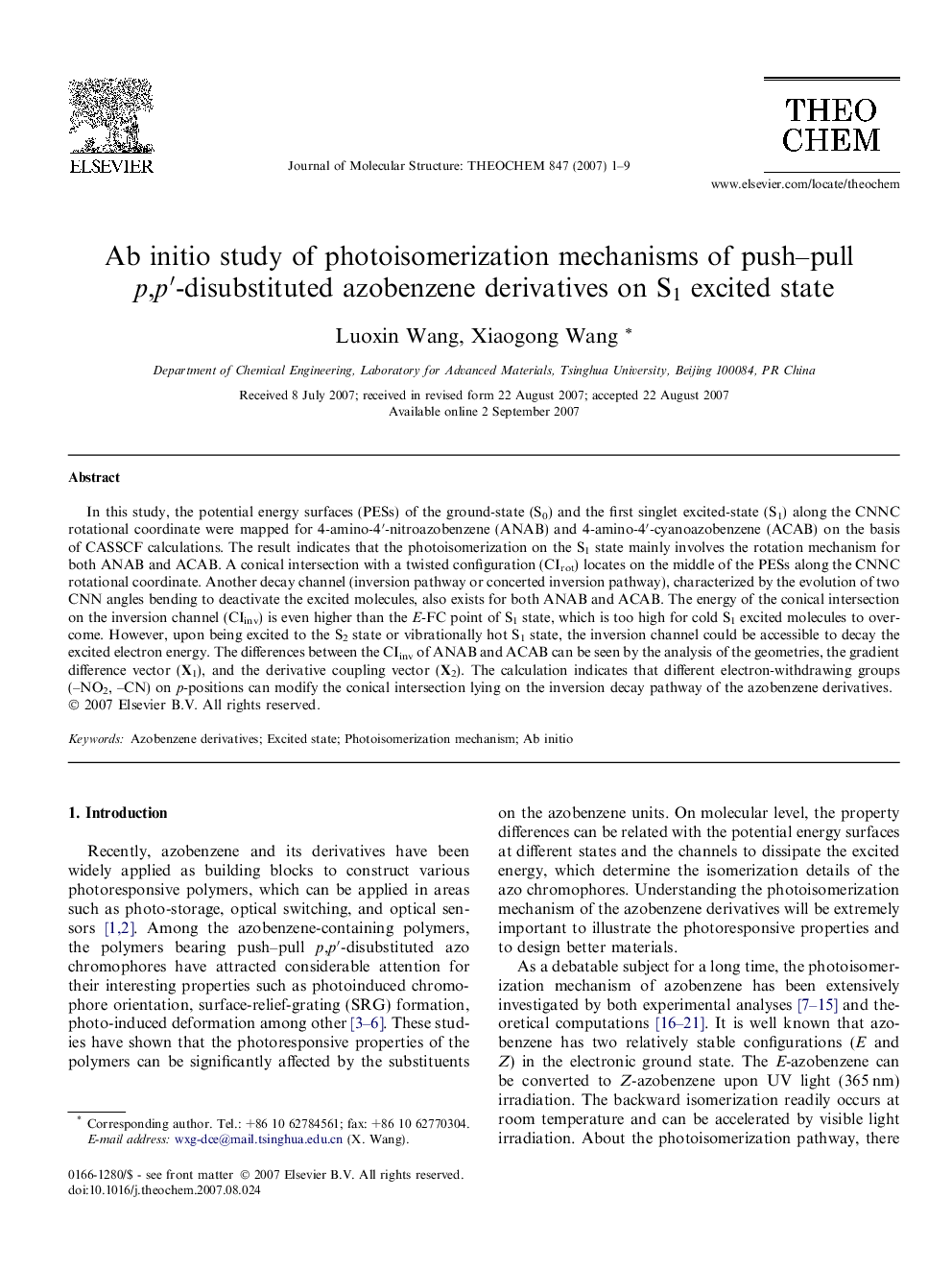| Article ID | Journal | Published Year | Pages | File Type |
|---|---|---|---|---|
| 5418746 | Journal of Molecular Structure: THEOCHEM | 2007 | 9 Pages |
Abstract
In this study, the potential energy surfaces (PESs) of the ground-state (S0) and the first singlet excited-state (S1) along the CNNC rotational coordinate were mapped for 4-amino-4â²-nitroazobenzene (ANAB) and 4-amino-4â²-cyanoazobenzene (ACAB) on the basis of CASSCF calculations. The result indicates that the photoisomerization on the S1 state mainly involves the rotation mechanism for both ANAB and ACAB. A conical intersection with a twisted configuration (CIrot) locates on the middle of the PESs along the CNNC rotational coordinate. Another decay channel (inversion pathway or concerted inversion pathway), characterized by the evolution of two CNN angles bending to deactivate the excited molecules, also exists for both ANAB and ACAB. The energy of the conical intersection on the inversion channel (CIinv) is even higher than the E-FC point of S1 state, which is too high for cold S1 excited molecules to overcome. However, upon being excited to the S2 state or vibrationally hot S1 state, the inversion channel could be accessible to decay the excited electron energy. The differences between the CIinv of ANAB and ACAB can be seen by the analysis of the geometries, the gradient difference vector (X1), and the derivative coupling vector (X2). The calculation indicates that different electron-withdrawing groups (-NO2, -CN) on p-positions can modify the conical intersection lying on the inversion decay pathway of the azobenzene derivatives.
Related Topics
Physical Sciences and Engineering
Chemistry
Physical and Theoretical Chemistry
Authors
Luoxin Wang, Xiaogong Wang,
